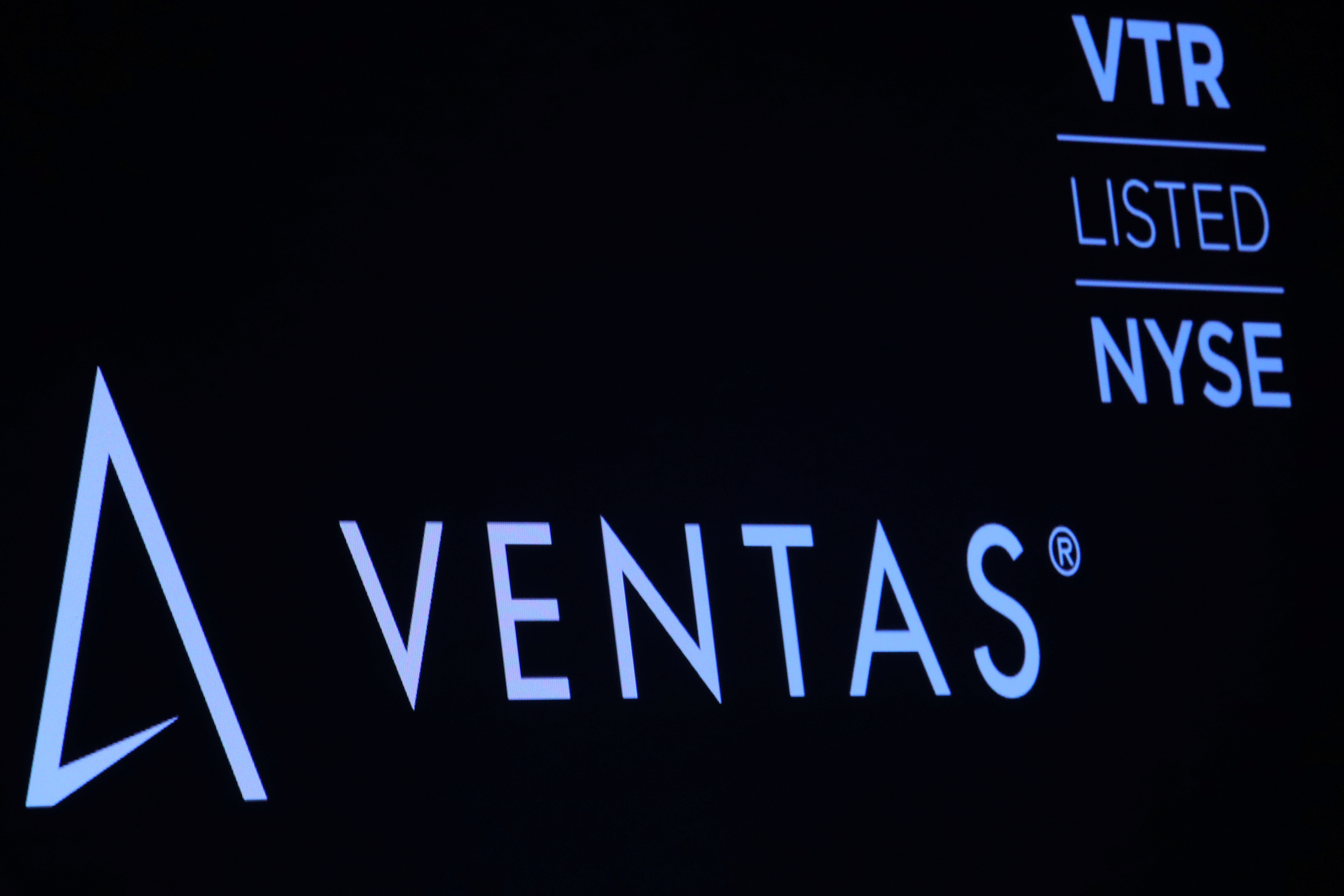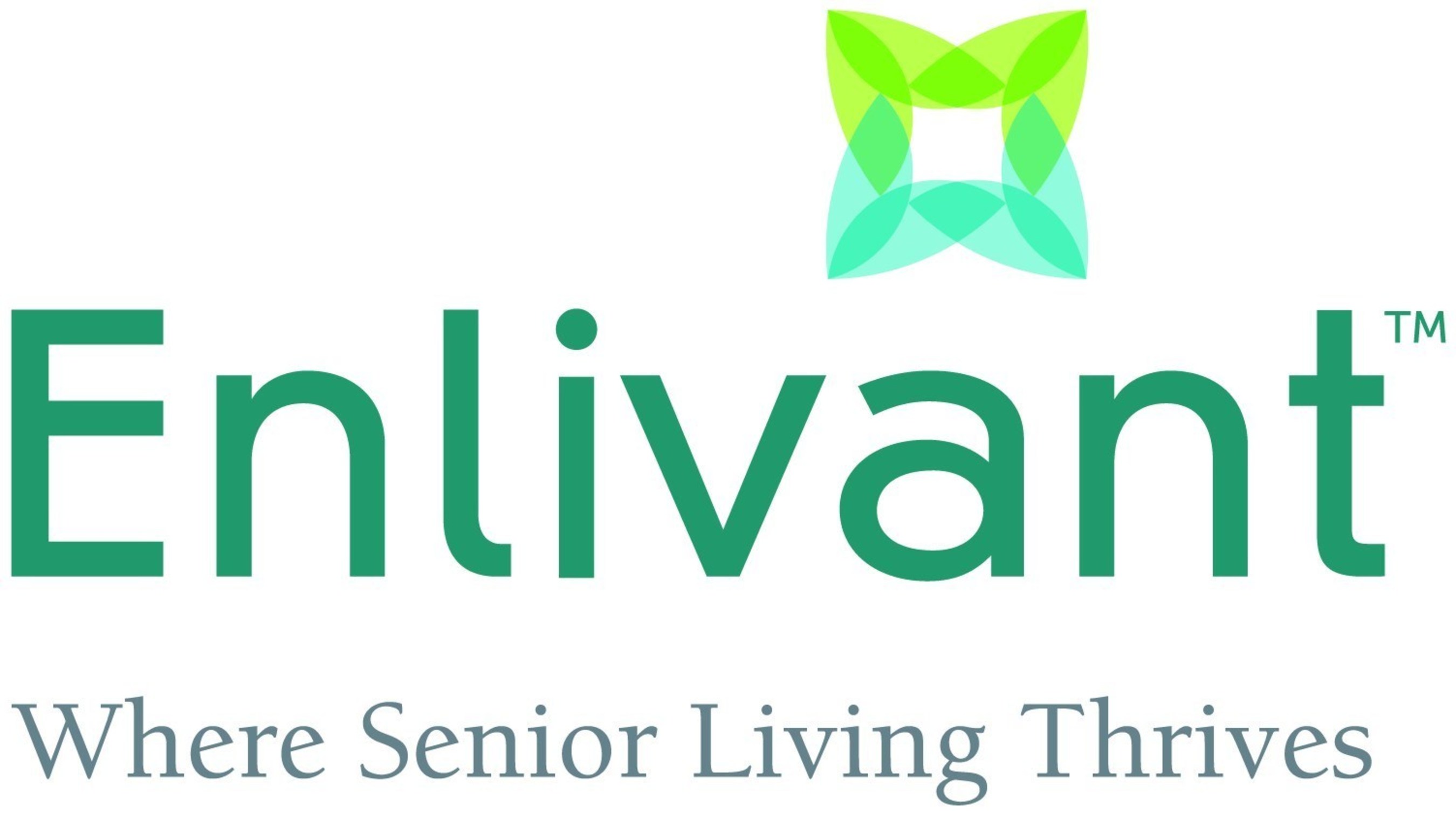Top 20 Nursing Homes & Residential Care Facilities companies in 2023
Top 20 Nursing Homes & Residential Care Facilities companies in 2023

Top 20 Nursing Homes & Residential Care Facilities companies in 2023
As the demand for senior care services continues to increase, the nursing homes and residential care facilities industry has become a crucial component of the healthcare sector.
In 2023, there are several top-performing nursing homes and residential care facility companies that stand out in the industry, providing high-quality care and services to elderly individuals.
In this article, we will introduce the top 20 nursing homes and residential care facility companies in 2023, highlighting their strengths and areas of expertise.
- Brookdale Senior Living Inc.
- Sunrise Senior Living LLC
- Atria Senior Living Group Inc.
- Five Star Senior Living Inc.
- Enlivant
- Senior Lifestyle Corporation
- Capital Senior Living Corporation
- Holiday Retirement
- The Ensign Group, Inc.
- National Health Investors Inc.
- Healthpeak Properties, Inc.
- Ventas, Inc.
- Welltower Inc.
- Genesis Healthcare Inc.
- Consulate Health Care
- HCR ManorCare
- Life Care Services LLC
- Sabra Health Care REIT, Inc.
- PruittHealth
- Kindred Healthcare LLC
These companies have been selected based on their size, reputation, quality of care, and overall industry performance.
They offer a range of services, from assisted living to skilled nursing care, and are dedicated to improving the quality of life for their residents.
Let’s take a closer look at what each of these companies has to offer.
Brookdale Senior Living Inc.
Brookdale Senior Living Inc. is one of the largest senior living companies in the United States, operating over 700 communities across the country.
Their services include independent living, assisted living, memory care, and skilled nursing care. They are known for their commitment to personalized care, providing individualized care plans for each resident based on their unique needs and preferences.
In addition to its comprehensive care services, Brookdale Senior Living also offers a wide range of amenities and programs designed to enhance the lives of its residents.
These include fitness and wellness programs, social and recreational activities, and educational classes and seminars.
Brookdale Senior Living has received numerous awards and accolades for its industry-leading care and services. They have been recognized as one of Fortune magazine’s “World’s Most Admired Companies” and have received the “Best of the Best” award from the Assisted Living Federation of America.
Sunrise Senior Living LLC
Sunrise Senior Living LLC is a leading provider of senior living services with over 300 communities across the United States, Canada, and the United Kingdom.
Their services include assisted living, memory care, independent living, and skilled nursing care. Sunrise Senior Living is known for its focus on individualized care, offering personalized care plans that are tailored to meet the specific needs of each resident.
In addition to their high-quality care services, Sunrise Senior Living also offers a wide range of amenities and activities designed to promote physical, mental, and emotional well-being for their residents.
These include fitness and wellness programs, social and recreational activities, and educational classes and seminars.
Sunrise Senior Living has received numerous awards and recognitions for its commitment to excellence in senior care.
They have been recognized as one of Fortune magazine’s “Best Workplaces for Aging Services” and have received the “Best of the Best” award from the Assisted Living Federation of America.
They are also the recipient of the “Excellence in Quality” award from the American Health Care Association and the National Center for Assisted Living.
Atria Senior Living Group Inc.

Atria Senior Living Group Inc. is a leading provider of senior living services with over 200 communities across the United States and Canada.
Their services include independent living, assisted living, and memory care. Atria Senior Living is known for its commitment to creating vibrant communities that offer residents a sense of purpose and belonging.
In addition to its comprehensive care services, Atria Senior Living also offers a wide range of amenities and activities designed to promote physical, mental, and emotional well-being for its residents.
These include fitness and wellness programs, social and recreational activities, and educational classes and seminars.
Atria Senior Living has received numerous awards and recognitions for its commitment to excellence in senior care.
They have been recognized as one of Fortune magazine’s “Best Workplaces for Aging Services” and have received the “Best of the Best” award from the Assisted Living Federation of America.
They are also the recipient of the “Excellence in Quality” award from the American Health Care Association and the National Center for Assisted Living.
Atria Senior Living is committed to providing high-quality care and services to its residents and their families.
Five Star Senior Living Inc.
Five Star Senior Living Inc. is a leading provider of senior living services with over 250 communities across the United States.
Their services include independent living, assisted living, memory care, and skilled nursing care. Five Star Senior Living is known for its commitment to providing personalized care and services that meet the unique needs and preferences of its residents.
In addition to their high-quality care services, Five Star Senior Living also offers a wide range of amenities and activities designed to promote physical, mental, and emotional well-being for their residents.
These include fitness and wellness programs, social and recreational activities, and educational classes and seminars.
Five Star Senior Living has received numerous awards and recognitions for its commitment to excellence in senior care.
They have been recognized as one of Fortune magazine’s “World’s Most Admired Companies” and have received the “Best of the Best” award from the Assisted Living Federation of America.
They are also the recipient of the “Excellence in Quality” award from the American Health Care Association and the National Center for Assisted Living.
Five Star Senior Living is committed to providing exceptional care and services that help seniors live their best lives.
Enlivant
Enlivant is a leading provider of senior living services with over 200 communities across the United States. Their services include assisted living, memory care, and respite care.
Enlivant is known for its commitment to providing high-quality, individualized care that promotes independence, dignity, and a sense of purpose for its residents.
In addition to their comprehensive care services, Enlivant also offers a wide range of amenities and activities designed to promote physical, mental, and emotional well-being for their residents.
These include fitness and wellness programs, social and recreational activities, and educational classes and seminars.
Enlivant has received numerous awards and recognitions for its commitment to excellence in senior care. They have been recognized as one of Fortune magazine’s “Best Workplaces for Aging Services” and have received the “Best of the Best” award from the Assisted Living Federation of America.
They are also the recipient of the “Excellence in Quality” award from the American Health Care Association and the National Center for Assisted Living.
Enlivant is committed to providing exceptional care and services that help seniors live their best lives.
Senior Lifestyle Corporation

Senior Lifestyle Corporation is a leading provider of senior living services with over 170 communities across the United States.
Their services include independent living, assisted living, memory care, and skilled nursing care. Senior Lifestyle Corporation is known for its commitment to creating communities that foster a sense of belonging and purpose for its residents.
In addition to their high-quality care services, Senior Lifestyle Corporation also offers a wide range of amenities and activities designed to promote physical, mental, and emotional well-being for their residents.
These include fitness and wellness programs, social and recreational activities, and educational classes and seminars.
Senior Lifestyle Corporation has received numerous awards and recognitions for its commitment to excellence in senior care.
They have been recognized as one of Fortune magazine’s “Best Workplaces for Aging Services” and have received the “Best of the Best” award from the Assisted Living Federation of America.
They are also the recipient of the “Excellence in Quality” award from the American Health Care Association and the National Center for Assisted Living.
Senior Lifestyle Corporation is committed to providing exceptional care and services that help seniors live their best lives.
Capital Senior Living Corporation

Capital Senior Living Corporation is a leading provider of senior living services with over 70 communities across the United States.
Their services include independent living, assisted living, and memory care. Capital Senior Living is committed to providing affordable, high-quality care that promotes independence, dignity, and well-being for its residents.
In addition to its care services, Capital Senior Living also offers a wide range of amenities and activities designed to promote physical, mental, and emotional well-being for its residents.
These include fitness and wellness programs, social and recreational activities, and educational classes and seminars.
Capital Senior Living has received numerous awards and recognitions for its commitment to excellence in senior care.
They are the recipient of the “Excellence in Quality” award from the American Health Care Association and the National Center for Assisted Living.
Capital Senior Living is committed to providing exceptional care and services that help seniors live their best lives.
Holiday Retirement

Holiday Retirement is a leading provider of independent senior living services with over 250 communities across the United States.
Their services include private apartments, dining, housekeeping, transportation, and a variety of social and recreational activities designed to promote a vibrant and fulfilling lifestyle for their residents.
Holiday Retirement is committed to providing affordable, high-quality care that promotes independence, dignity, and well-being for its residents.
They offer a range of personalized care services, including medication management, assistance with daily living activities, and support for memory care needs.
Holiday Retirement has received numerous awards and recognitions for its commitment to excellence in senior care.
They have been recognized as one of Fortune magazine’s “Best Workplaces for Aging Services” and have received the “Best of the Best” award from the Assisted Living Federation of America.
They are also the recipient of the “Excellence in Quality” award from the American Health Care Association and the National Center for Assisted Living.
Holiday Retirement is committed to providing exceptional care and services that help seniors live their best lives.
The Ensign Group, Inc.
The Ensign Group, Inc. is a provider of skilled nursing, rehabilitative care services, hospice care, home health care, and assisted living services.
The company operates over 300 facilities across the United States, with a focus on providing high-quality, personalized care to meet the unique needs of each individual.
In addition to their care services, The Ensign Group also offers a range of amenities and activities designed to promote physical, mental, and emotional well-being for their residents.
These include fitness and wellness programs, social and recreational activities, and educational classes and seminars.
The Ensign Group has received numerous awards and recognitions for their commitment to excellence in senior care.
They are the recipient of the “Excellence in Quality” award from the American Health Care Association and the National Center for Assisted Living.
The Ensign Group is committed to providing exceptional care and services that help seniors live their best lives.
National Health Investors Inc.

National Health Investors Inc. (NHI) is a real estate investment trust that specializes in the acquisition and financing of healthcare properties, including senior living communities, skilled nursing facilities, and medical office buildings.
NHI invests in properties across the United States and is committed to providing quality healthcare facilities that meet the needs of seniors and their families.
In addition to their focus on real estate investment, NHI is also committed to supporting their operators and tenants in delivering high-quality care and services to their residents.
NHI partners with leading healthcare providers to develop innovative solutions that promote independence, dignity, and well-being for seniors.
NHI has received numerous awards and recognitions for their commitment to excellence in senior care. They are the recipient of the “Excellence in Quality” award from the American Health Care Association and the National Center for Assisted Living.
NHI is committed to providing exceptional care and services that help seniors live their best lives.
Healthpeak Properties, Inc.

Healthpeak Properties, Inc. (formerly known as HCP, Inc.) is a real estate investment trust that invests primarily in healthcare properties, including senior living communities, skilled nursing facilities, and medical office buildings.
The company operates over 600 properties across the United States and is committed to providing high-quality healthcare facilities that meet the unique needs of seniors and their families.
In addition to their focus on real estate investment, Healthpeak Properties is also committed to supporting their operators and tenants in delivering high-quality care and services to their residents.
Healthpeak Properties partners with leading healthcare providers to develop innovative solutions that promote independence, dignity, and well-being for seniors.
Healthpeak Properties has received numerous awards and recognitions for its commitment to excellence in senior care.
They are the recipient of the “Excellence in Quality” award from the American Health Care Association and the National Center for Assisted Living.
Healthpeak Properties is committed to providing exceptional care and services that help seniors live their best lives.
Ventas, Inc.

Ventas, Inc. is a real estate investment trust that invests primarily in healthcare properties, including senior living communities, medical office buildings, and skilled nursing facilities.
The company operates over 1,200 properties across the United States, Canada, and the United Kingdom and is committed to providing high-quality healthcare facilities that meet the unique needs of seniors and their families.
In addition to their focus on real estate investment, Ventas is also committed to supporting their operators and tenants in delivering high-quality care and services to their residents.
Venta partners with leading healthcare providers to develop innovative solutions that promote independence, dignity, and well-being for seniors.
Ventas has received numerous awards and recognitions for its commitment to excellence in senior care. They are the recipient of the “Excellence in Quality” award from the American Health Care Association and the National Center for Assisted Living.
Ventas is committed to providing exceptional care and services that help seniors live their best lives.
Welltower Inc.

Welltower Inc. is a real estate investment trust that invests primarily in healthcare properties, including senior living communities, medical office buildings, and post-acute care facilities.
The company operates over 1,400 properties across the United States, Canada, and the United Kingdom and is committed to providing high-quality healthcare facilities that meet the unique needs of seniors and their families.
In addition to their focus on real estate investment, Welltower is also committed to supporting their operators and tenants in delivering high-quality care and services to their residents.
Welltower partners with leading healthcare providers to develop innovative solutions that promote independence, dignity, and well-being for seniors.
Welltower has received numerous awards and recognitions for its commitment to excellence in senior care. They are the recipient of the “Excellence in Quality” award from the American Health Care Association and the National Center for Assisted Living.
Welltower is committed to providing exceptional care and services that help seniors live their best lives.
Genesis Healthcare Inc.

Genesis Healthcare Inc. is a leading provider of skilled nursing and rehabilitation services, including short-term rehabilitation, long-term care, and assisted living services.
The company operates over 300 facilities across the United States and is committed to providing high-quality, personalized care to meet the unique needs of each individual.
In addition to its care services, Genesis Healthcare also offers a range of amenities and activities designed to promote physical, mental, and emotional well-being for its residents.
These include fitness and wellness programs, social and recreational activities, and educational classes and seminars.
Genesis Healthcare has received numerous awards and recognitions for its commitment to excellence in senior care.
They are the recipient of the “Excellence in Quality” award from the American Health Care Association and the National Center for Assisted Living.
Genesis Healthcare is committed to providing exceptional care and services that help seniors live their best lives.
Consulate Health Care

Consulate Health Care is a leading provider of healthcare services, including skilled nursing, assisted living, and rehabilitation services.
The company operates over 140 facilities across the United States and is committed to providing high-quality, personalized care to meet the unique needs of each individual.
Consulate Health Care offers a range of amenities and services designed to promote physical, mental, and emotional well-being for their residents.
These include recreational and social activities, rehabilitation services, and individualized care plans.
Consulate Health Care has received numerous awards and recognitions for its commitment to excellence in senior care.
They are the recipient of the “Excellence in Quality” award from the American Health Care Association and the National Center for Assisted Living.
Consulate Health Care is committed to providing exceptional care and services that help seniors live their best lives.
HCR ManorCare

HCR ManorCare is a leading provider of post-acute care services, including skilled nursing, assisted living, rehabilitation, and hospice care.
The company operates over 170 facilities across the United States and is committed to providing high-quality, personalized care to meet the unique needs of each individual.
HCR ManorCare offers a range of amenities and services designed to promote physical, mental, and emotional well-being for its residents.
These include recreational and social activities, rehabilitation services, and individualized care plans.
HCR ManorCare has received numerous awards and recognitions for its commitment to excellence in senior care.
They are the recipient of the “Excellence in Quality” award from the American Health Care Association and the National Center for Assisted Living.
HCR ManorCare is committed to providing exceptional care and services that help seniors live their best lives.
Life Care Services LLC
Life Care Services LLC is a leading provider of senior living management services, offering a wide range of services to senior living communities across the United States.
The company has been in operation for over 40 years and is committed to providing high-quality care and services that meet the unique needs of seniors and their families.
Life Care Services offers a variety of senior living options, including independent living, assisted living, memory care, and skilled nursing.
The company provides personalized care plans, social and recreational activities, and access to healthcare services to promote physical, mental, and emotional well-being for their residents.
Life Care Services has received numerous awards and recognitions for its commitment to excellence in senior care.
They are the recipient of the “Excellence in Quality” award from the American Health Care Association and the National Center for Assisted Living.
Life Care Services is committed to providing exceptional care and services that help seniors live their best lives.
Sabra Health Care REIT, Inc.

Sabra Health Care REIT, Inc. is a leading real estate investment trust (REIT) that owns and invests in healthcare real estate, including senior housing and skilled nursing facilities.
The company operates over 400 facilities across the United States and is committed to providing high-quality, safe, and comfortable environments for seniors.
Sabra Health Care REIT offers a range of senior living options, including independent living, assisted living, memory care, and skilled nursing.
The company partners with leading healthcare providers to ensure that residents receive high-quality care and services that meet their unique needs.
Sabra Health Care REIT has received numerous awards and recognitions for their commitment to excellence in senior care.
They are the recipient of the “Excellence in Quality” award from the American Health Care Association and the National Center for Assisted Living.
Sabra Health Care REIT is committed to providing exceptional real estate and healthcare services that help seniors live their best lives.
PruittHealth
PruittHealth is a leading provider of healthcare services, including skilled nursing, assisted living, rehabilitation, and hospice care.
The company operates over 100 facilities across the southeastern United States and is committed to providing high-quality, personalized care to meet the unique needs of each individual.
PruittHealth offers a range of amenities and services designed to promote physical, mental, and emotional well-being for its residents.
These include recreational and social activities, rehabilitation services, and individualized care plans.
PruittHealth has received numerous awards and recognitions for its commitment to excellence in senior care.
They are the recipient of the “Excellence in Quality” award from the American Health Care Association and the National Center for Assisted Living.
PruittHealth is committed to providing exceptional care and services that help seniors live their best lives.
Kindred Healthcare LLC

Kindred Healthcare LLC is a leading provider of post-acute care services, including skilled nursing, rehabilitation, home health, and hospice care.
The company operates over 600 facilities across the United States and is committed to providing high-quality, personalized care to meet the unique needs of each individual.
Kindred Healthcare offers a range of amenities and services designed to promote physical, mental, and emotional well-being for its patients and residents.
These include recreational and social activities, rehabilitation services, and individualized care plans.
Kindred Healthcare has received numerous awards and recognitions for its commitment to excellence in healthcare.
They are the recipient of the “Excellence in Quality” award from the American Health Care Association and the National Center for Assisted Living.
Kindred Healthcare is committed to providing exceptional care and services that help patients and residents achieve optimal health outcomes.
In conclusion, the top 20 nursing homes and residential care facilities companies in 2023 are leaders in the senior care industry, providing exceptional care and services to seniors across the United States.
These companies are committed to promoting physical, mental, and emotional well-being for their residents, and they have received numerous awards and recognitions for their commitment to excellence in senior care.
From independent living to skilled nursing, these companies offer a wide range of senior living options to meet the unique needs of each individual.
Overall, these top 20 companies are setting the standard for senior care and are dedicated to helping seniors live their best lives.








